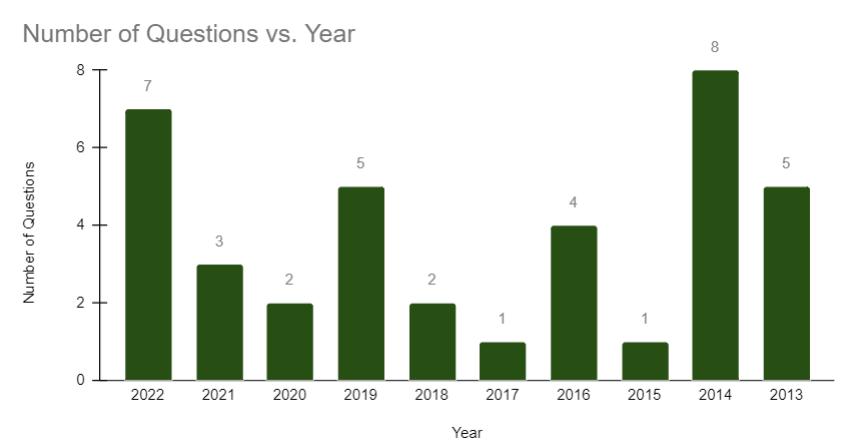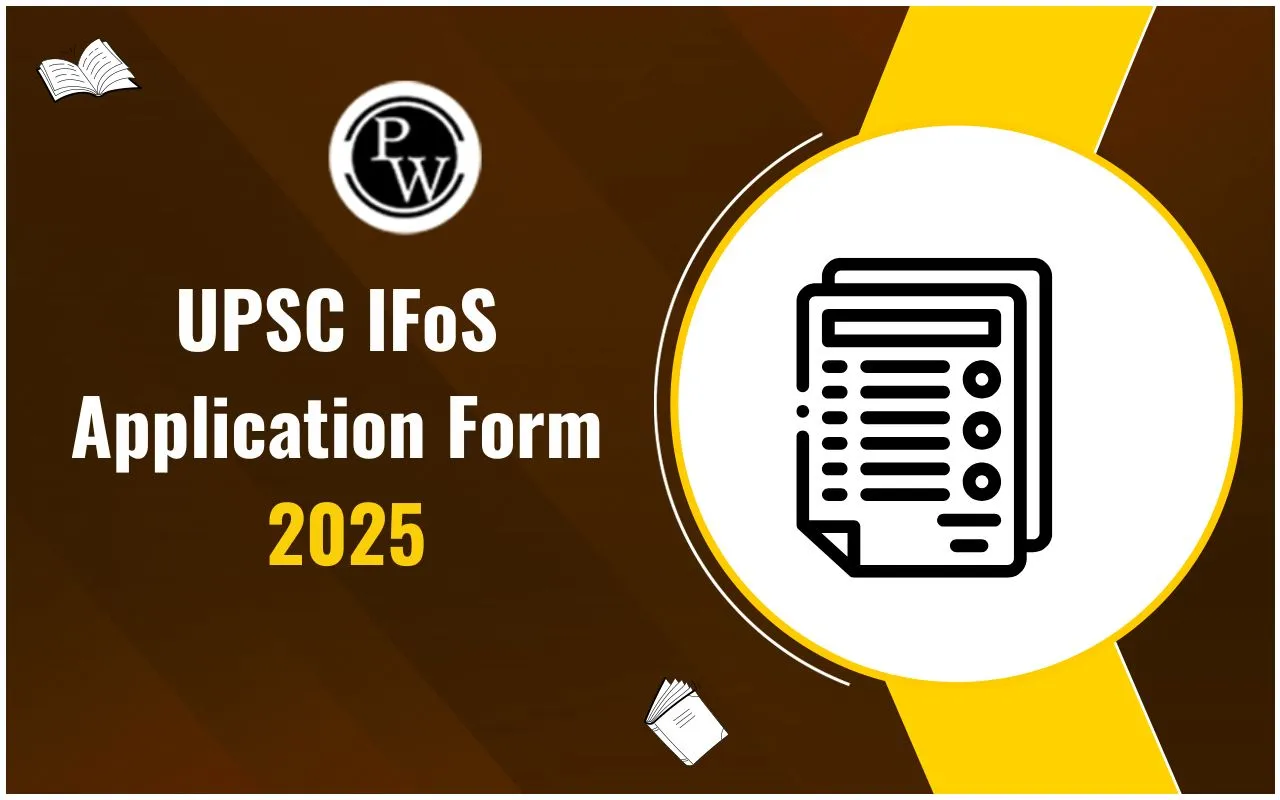
UPSC Prelims Medieval History Questions: Candidates often leave out the Medieval History section, thinking it has a low input-output ratio. However, this section tends to surprise them in the UPSC Prelims exam, as happened in 2022. Therefore, candidates must not neglect the value of Medieval History questions in UPSC Prelims.
The Medieval History questions are asked from the early medieval period to the later Mughal phase. Most questions based on the meaning of terms, Bhakti saints, personalities, etc., come in the UPSC Prelims from the Medieval History section. To prepare for this section, candidates should stick to the old and new NCERTs.UPSC Prelims Medieval History Questions 2024
The UPSC Prelims 2024 included just one Medieval History question. Medieval History Questions in UPSC Prelims usually focus on topics such as the Delhi Sultanate, the Mughal Empire, the Bhakti movement, the Vijayanagara Empire, and more. Here is the question that was asked this year:Question: Who of the following rulers of medieval India gave permission to the Portuguese to build a fort at Bhatkal?
-
- Krishnadevaraya
- Narasimha Saluva
- Muhammad Shah III
- Yusuf Adil Shah
Medieval History Questions in UPSC Prelims 2023
The UPSC Prelims 2023 witnessed a drop in Medieval History questions from 2022. This reflects the unpredictable pattern of Medieval History questions in the UPSC Prelims exam, for which candidates should be well-prepared. The questions that were asked from the Medieval History subject in UPSC Prelims are as follows:- Hoysala
- Gahadavala
- Kakatiya
- Yadava
- a) Only one
- b) Only two
- c) Only three
- d) None
- a) Devaraya I
- b) Mallikarjuna
- c) Vira Vijaya
- d) Virupaksha
Medieval History Questions in UPSC Prelims Year Wise
There is no fixed pattern of the Medieval History questions in the UPSC Prelims exam. In some years, only 1 question was asked, while in other years, 7 to 8 questions were asked from the Medieval History subject. Candidates should note that Medieval History also overlaps with Art and Culture subjects similar to Ancient History. Therefore, the exact number of questions may vary as per the inclusion or exclusion of Art and Culture-based questions. Here is the overall trend of the Medieval History questions in UPSC Prelims till 2022.

Topic Wise Medieval History Questions in UPSC Prelims
Based on the previous year's question paper analysis, it can be concluded that candidates need to focus more on the important themes in Medieval History. Neither can they leave this subject and nor are all topics equally important. While studying for the UPSC Prelims exam, make a note of topic-wise analysis of Medieval History questions as given below:
Early Medieval India
- Consider the following statements: (2021)
- It was during the reign of Iltutmish that Chengiz Khan reached the Indus in pursuit of the fugitive Khwarezm prince.
- It was during the reign of Muhammad bin Tughluq that Taimur occupied Multan and crossed the Indus.
- It was during the reign of Deva Raya II of the Vijayanagara Empire that Vasco da Gama reached the coast of Kerala.
Which of the statements given above is/are correct?
(a) 1 only
(b) 1 and 2
(c) 3 only
(d) 2 and 3
Which one of the following was a very important seaport in the Kakatiya kingdom?
(a) Kakinada
(b) Motupalli
(c) Machilipatnam (Masulipatnam)
(d) Nelluru
Delhi Sultanate
With reference to Indian history, consider the following statements: (2022)
- The first Mongol invasion of India happened during the reign of Jalalud- din Khalji.
- During the reign of Ala-ud-din Khalji, one Mongol assault marched up to Delhi and besieged the city.
- Muhammad-bin-Tughlaq temporarily lost portions of the north-west of his kingdom to the Mongols.
Which of the statements given above is/are correct?
(a) 1 and 2
(b) 2 only
(c) 1 and 3
(d) 3 only
Mughal Empire
Consider the following: (2015) The arrival of Babur into India led to the:
- Introduction of gunpowder in the subcontinent
- Introduction of the arch and dome in the region’s architecture
- establishment of Timurid dynasty in the region
Select the correct answer using the codes given
(a) 1 and 2 only
(b) 3 only
(c) 1 and 3 only
(d) 1, 2, and 3
Terms/Cultural Traditions
With reference to Indian history, who of the following were known as “Kulah-Daran”? (2022)
(a) Arab merchants
(b) Qalandars
(c) Persian calligraphists
(d) Sayyids
With reference to medieval India, which one of the following is the correct sequence in ascending order in terms of size? (2021)
(a) Paragana—Sarkar—Suba
(b) Sarkar—Paragana—Suba
(c) Suba—Sarkar—Paragana
(d) Paragana—Suba—Sarkar
Who among the following Mughal Emperors shifted emphasis from illustrated manuscripts to albums and individual portraits? (2019)
(a) Humayun
(b) Akbar
(c) Jahangir
(d) Shah Jahan
With reference to the economic history of medieval India, the term ‘Araghatta’ refers to: (2016)
(a) bonded labour
(b) land grant made to military officers
(c) waterwheel used in the irrigation of land
(d) wasteland converted to cultivated land
Bhakti and Sufi Movements
The world’s second tallest statue in sitting pose of Ramanuja was inaugurated by the Prime Minister of India at Hyderabad recently. Which one of the following statements correctly represents the teachings of Ramanuja? (2022)
(a) The best means of salvation was devotion.
(b) Vedas are eternal, self-existent and wholly authoritative.
(c) Logical arguments were essential means for the highest bliss.
(d) Salvation was to be obtained through meditation.
Consider the following statements: (2019)
- Saint Nimbarka was a contemporary of Akbar.
- Saint Kabir was greatly influenced by Shaikh Ahmad Sirhindi.
Which of the statements given above is/are correct?
(a) 1 only
(b) 2 only
(c) Both 1 and 2
(d) Neither 1 nor 2
With reference to the cultural history of medieval India, consider the following statements: (2016)
- Siddhas (Sittars) of the Tamil region were monotheistic and condemned idolatry.
- Lingayats of the Kannada region questioned the theory of rebirth and rejected the caste hierarchy.
Which of the statements given above is/are correct?
(a) 1 only
(b) 2 only
(c) Both 1 and 2
(d) Neither 1 nor 2
Vijayanagara Empire
With reference to Indian history, which of the following statements is/are correct? (2021)
- The Nizamat of Arcot emerged from Hyderabad.
- The Mysore Kingdom emerged from the Vijayanagara Empire.
- Rohilkhand Kingdom was formed out of the territories occupied by Ahmad Shah Durrani.
Select the correct answer using the code given below:
(a) 1 and 2
(b) 2 only
(c) 2 and 3
(d) 3 only
Regarding the taxation system of Krishna Deva, the ruler of Vijayanagar, consider the following statements: (2016)
- The tax rate on land was fixed depending on the quality of the land.
- Private owners of workshops paid an industry tax.
Which of the statements given above is/are correct?
(a) 1 only
(b) 2 only
(c) Both 1 and 2
(d) Neither 1 nor 2
Travelers
Which one of the following foreign travelers elaborately discussed diamonds and diamond mines in India? (2018)
(a) Francois Bernier
(b) Jean-Baptiste Tavernier
(c) Jean de Thevenot
(d) Abbe Barthelemy Carre
According to Portuguese writer Nuniz, the women in Vijayanagara Empire were experts in which of the following areas ? (2021)
- Wrestling
- Astrology
- Accounting
- Soothsaying
Select the correct answer using the code given below.
(a) 1, 2, and 3 only
(b) 1, 3 and 4 only
(c) 2 and 4 only
(d) 1, 2, 3 and 4
Medieval History Questions in UPSC Prelims with Answers
Since the syllabus is vast in the Medieval History section, candidates should study this subject with integrated PYQ practice of Medieval History questions. To ease your preparation, the Udaan History Booklets by Physics Wallah offered comprehensive notes. The strategy is to read NCERTs and go through the Medieval History questions with answers. Check the explanation and include important points in your notes. Here is the direct link to download the PYQs with answers:
| UPSC Prelims Solved PYQs | |
| Title | Link |
| Medieval History Questions with Answers | UPSC Prelims Medieval History PYQs |
| Other Subject Questions in UPSC Prelims | UPSC Prelims PYQs |
Master the UPSC Prelims syllabus with the online courses by Physics Wallah!
Medieval History Questions in UPSC Prelims FAQs
How many questions come from the medieval history section in UPSC prelims?
Can I skip the ancient and medieval history part for UPSC Prelims?
How many days are required to complete medieval history?
Is Medieval Indian History important for UPSC Prelims?
How do I study medieval history for UPSC prelims?






